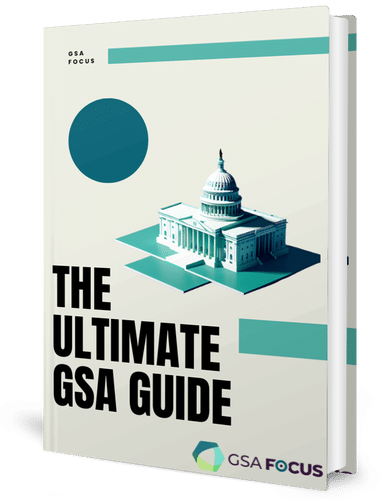What is GSA – The Multiple Award Schedule (MAS) of the General Services Administration (GSA) is a $36 billion contract vehicle that makes it simple for contractors to offer their products and services to federal agencies.
Selling to the federal government can often be an intimidating task: When it comes to developing a successful government sales pipeline, organizations wanting to break into the public sector must deal with a lot of paperwork, negotiations, and market research.
But there are ways to streamline the process.
What is the GSA?
President Harry S. Truman established the General Services Administration in 1949 to improve the federal government’s purchasing and administrative processes. But, what is the GSA? Since the late 1940s, GSA has developed significantly and is now the only source in the United States entirely dedicated to procuring products and services for the federal government.
Furthermore, the GSA is a separate government organization created to manage and support federal agencies’ core operations. GSA offers products and communications for government offices in the United States, transportation and office space for federal employees, and developing cost-cutting strategies and other management activities for the entire government.
How the GSA Works

After learning what the GSA is, it is important to note that about 12,000 federal employees work for it. It is responsible for managing approximately $500 billion of government property in the United States, split between 8,700 owned and leased buildings and a fleet of 215,000 vehicles.
In this context, the Lease Offer Platform (LOP) allows building owners and representatives to electronically offer building space to the federal government.
In response to a Request for Lease Proposal (RLP) package, the offer submission process is web-based, allowing all registered participants to submit and update bids for lease space to the Federal Government within set timeframes.
The Lease Offer Platform consists of:
1. The Automated Advanced Acquisition Program (AAAP)
The Automated Advanced Acquisition Program (AAAP) is a method for procuring multiple-award leases. The AAAP allows the market to compete for various federal leases by submitting a single offer through a simple online portal. The AAAP collects the best and final offers for general office space that needs to be stored in a secure database throughout the fiscal year.
Concerning GSA’s minimum requirements, offerors get urged to submit all available office space for three lease term options. The AAAP positions the GSA to respond to the government’s future leasing demands as soon as possible.
2. The Requirement Specific Acquisition Platform (RSAP)
The Requirement Specific Acquisition Platform (RSAP) is a lease procurement technology used on a single award basis. GSA’s traditional lease procurement technique transforms into an e-commerce procurement and transaction tool by collecting online offers for a specific space requirement.
By adopting a streamlined approach, the RSAP uses a single RLP for a given space requirement and allows offerors to adjust initial offers. The RSAP enables it to address complex space requirements electronically.
Selling through a GSA Contract
Two primary controlling regulatory documents, FAR and GSAM, guide the MAS program.
1. FAR

FAR 8.002 (Priorities for Use of Mandatory Sources) also specifies a procurement procedure that federal agencies must follow when purchasing goods and services.
This process is important for GSA Schedule holders since it states whether you can purchase a Federal Supply Schedule. Some of these determinations include the GSA Multiple Award Schedule Program; in this case, you must do it before agencies look for other Commercial Sources to make the purchase. In the end, if you know what you are doing, you can make the most of the FAR.
2. GSAM
The General Services Acquisition Manual (GSAM) is a set of guidelines for purchasing general services.
So, what is the GSAM used for? The GSAM gives an overview of the objective of GSA, definitions of important phrases and concepts that get commonly used in the field, and a plan for competition and acquisitions. While the FAR gets utilized for all federal procurement, the GSAM is only applicable to GSA contractors; hence it is especially important for future GSA contractors.
The GSAM will be able to answer almost any question you might have regarding the GSA, including the types of social programs available to contractors, the types of contracts available to contractors, and the types of contracts available to contractors. It is not a light read, but it will save you a lot of time in the long run.
Conclusion
You will have access to a whole new market of federal, state, and local government consumers once the GSA has approved you.
Despite the obvious benefits, you must complete a series of conditions before becoming a GSA contractor, and you must adhere to your GSA Schedule during the duration of your contract. In the end, the benefits of being a GSA Schedule holder outweigh the inconveniences that come with it.


